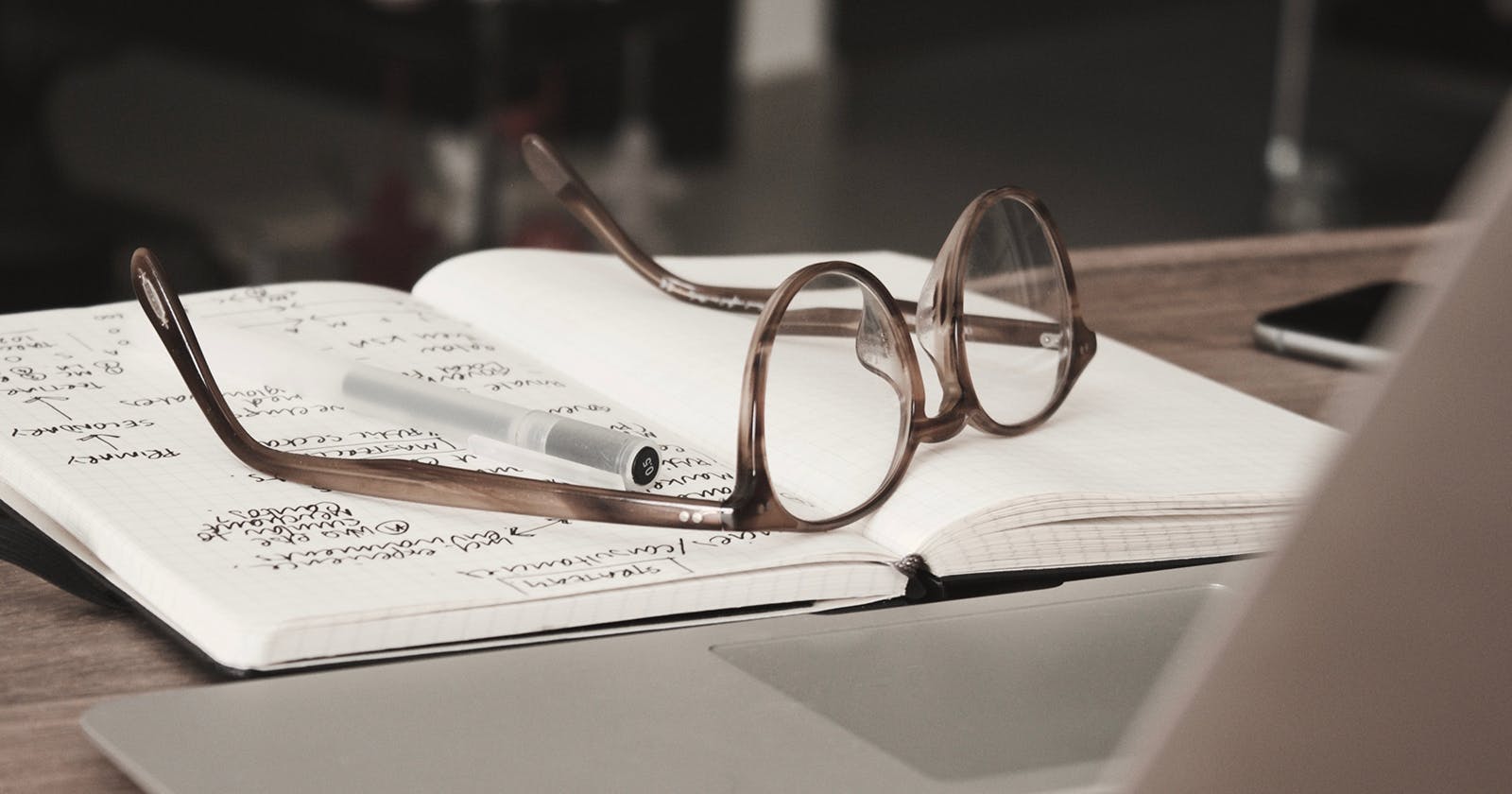There is something special about writing on a paper notebook - the feel of the pen on the paper, the way your handwriting looks on the page. Physically putting pen to paper can help you better remember and process information. It is a way to slow down and think about what you are learning. I have tried many different methods over the years and have found some that work better for me than others. In this blog post, I'll share the four methods I use most often and why I like them.
Split method
I just recently learned about this method. But I think this is probably the most helpful note-taking format I have ever known. Essentially, you break your page into two columns. On the left, you put all the keywords or questions. And on the right, you write down the definition of the keyword or answer to the questions.
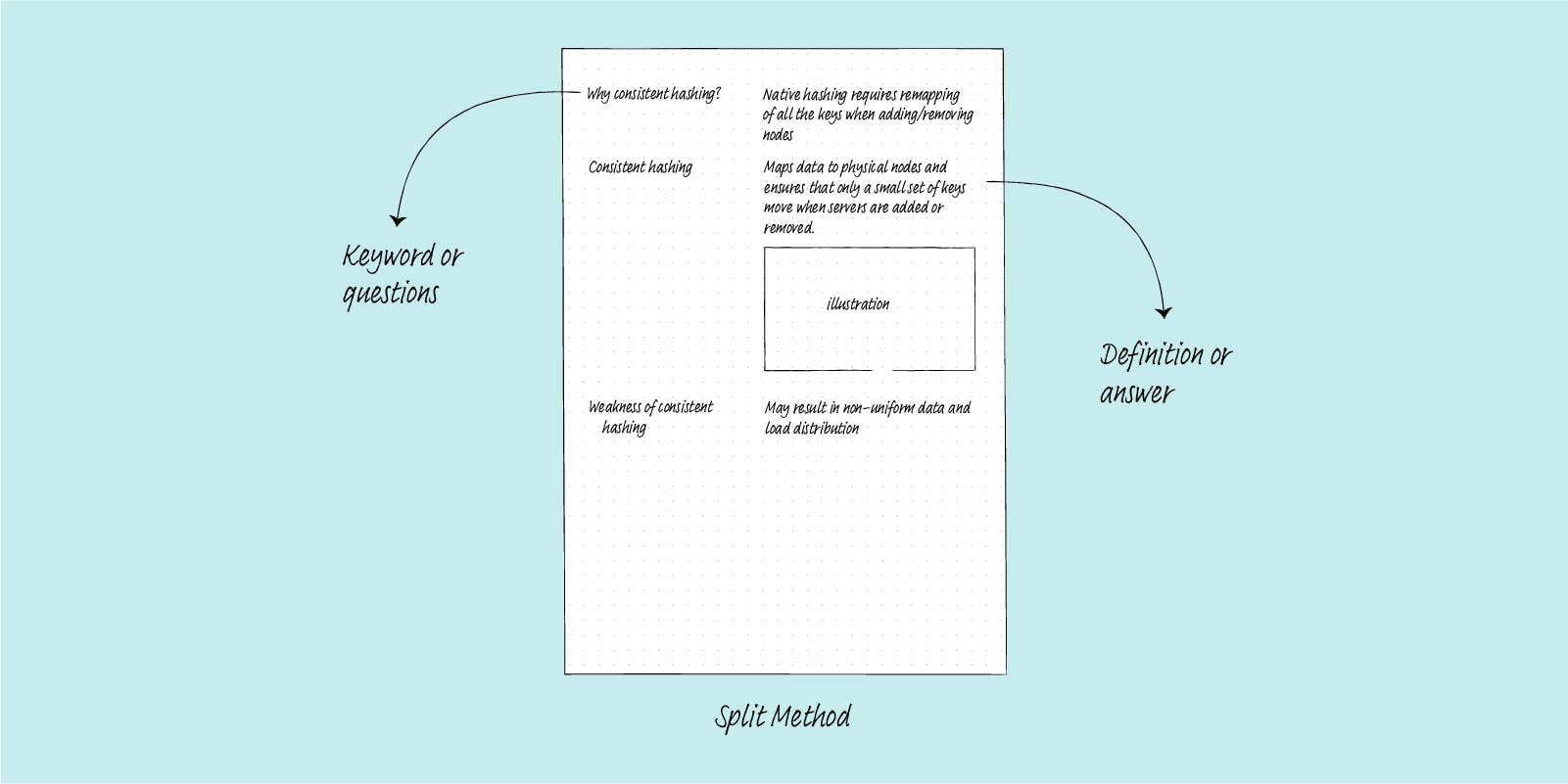
This method is perfect for factually dense material. You can close up the right side of your page and create a quiz. The act of quizzing yourself is active recall which is one of the best learning methods.
This format is also easy to transfer to an SRS software like Anki.
Modified Cornell method
The Cornell note-taking method is an excellent system for taking notes. In this format, you split the page into three areas. The most significant area is for notes, a spot on the left is for keywords and comments, and the location on the bottom of the page is for a summary.
In my modified version, I split the page into two sections. The first section, which covers two-thirds of the page, is where I put my notes, and the other one-third of the area is where I write down keywords or add comments. I put the margin on the right, and I don't have the bottom summary part. I do this because my notebook is in the A5 format, so it is too small to spare the bottom portion of the page for the summary. If I need to summarize, I will do it on another page.
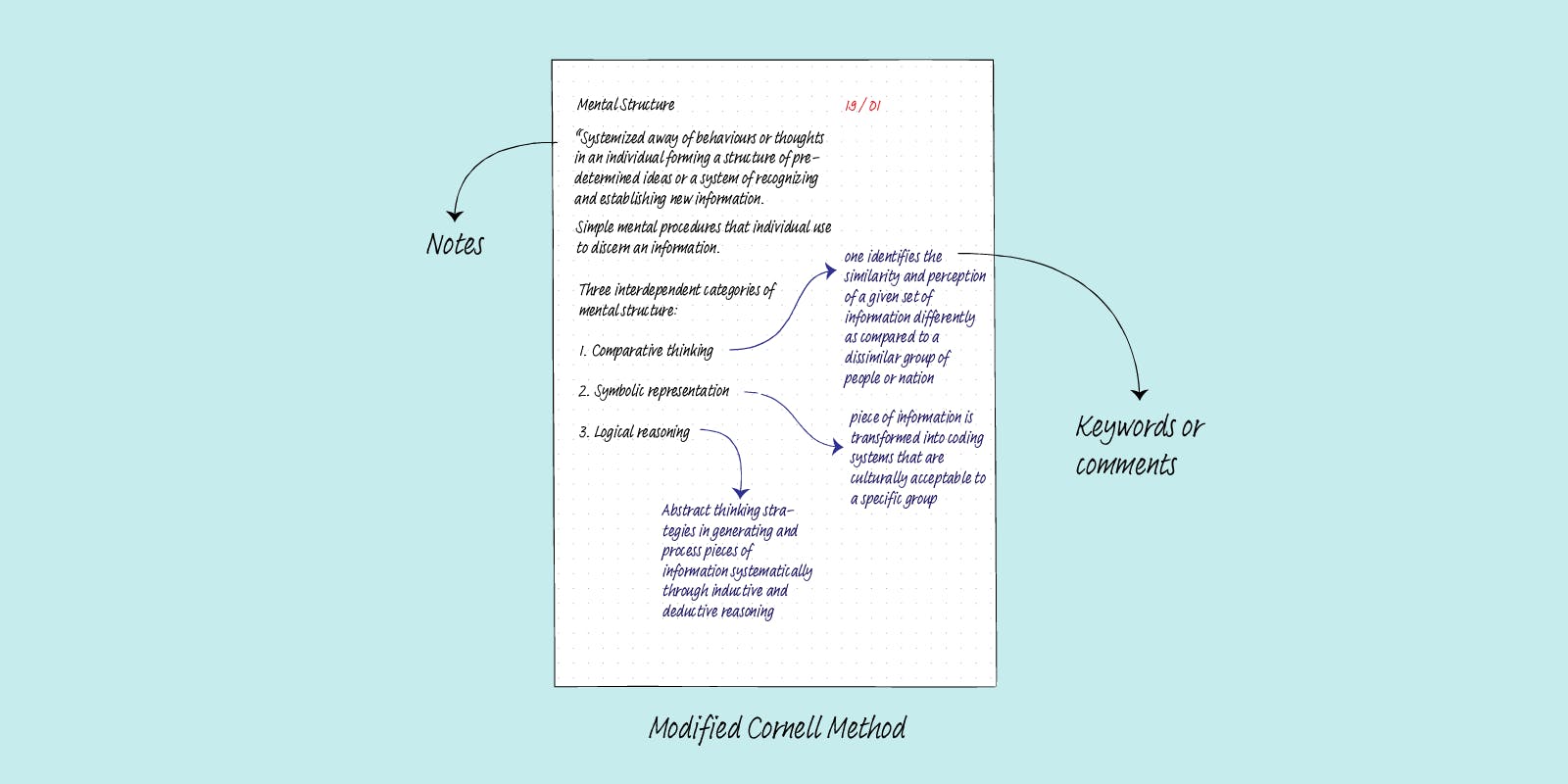
I use this format when I learn from a video or a presentation.
Mind map
Mind mapping is a note-taking method that can be used for almost anything. You can use a mind map for learning, brainstorming, taking meeting notes, and more. It involves drawing a diagram of the main ideas, with branches representing sub-topics. This technique visually organizes information and helps you see the relationships between concepts.
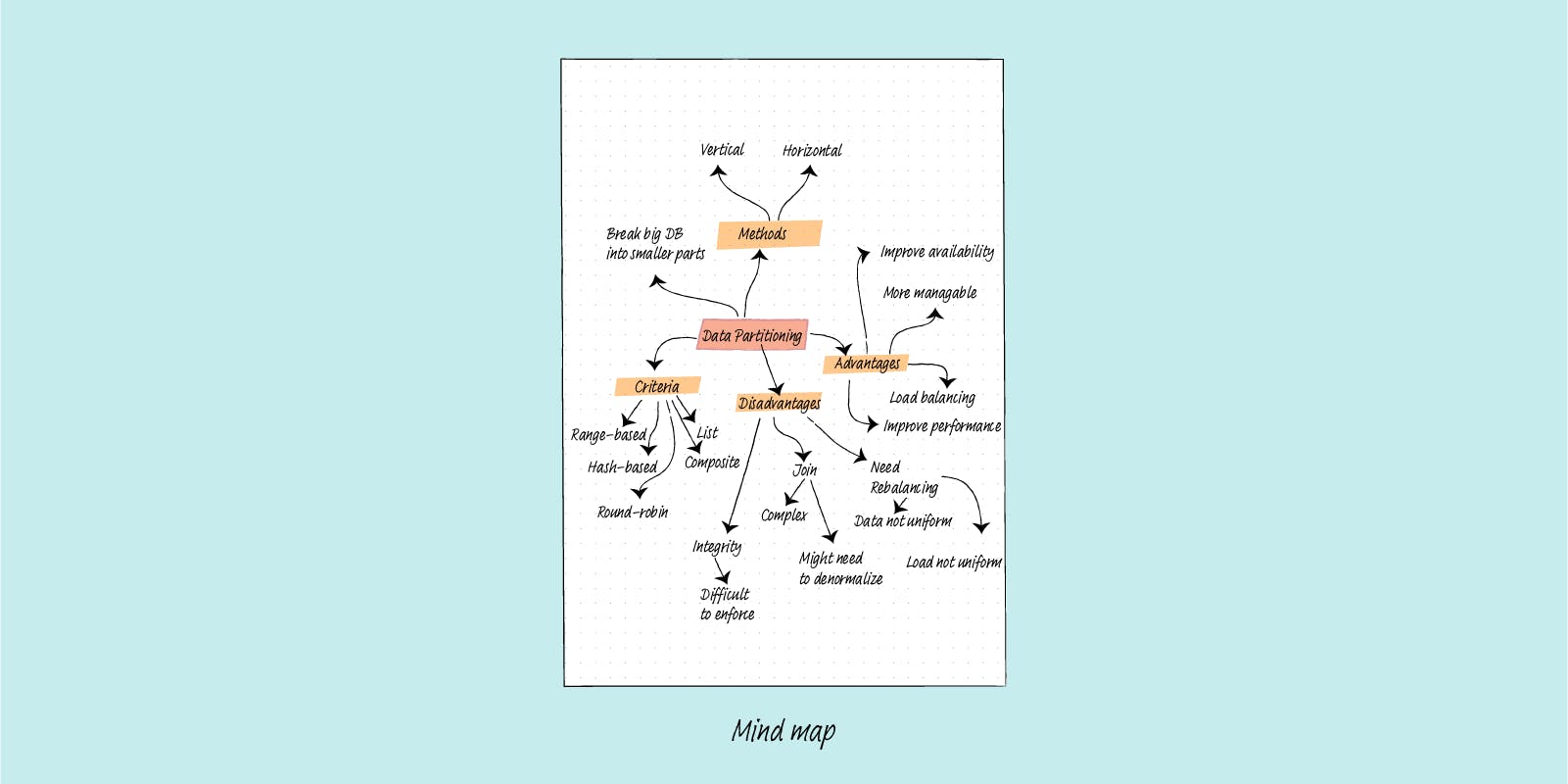
What is so great about mind maps, you may ask? First, mind maps help you to understand complex information. It enables you to break down a lecture into smaller parts, making it easier to grasp the material. Second, mind maps are a great way to organize information visually and help you remember information more easily. Third, mind maps are flexible – you can add new ideas or rearrange existing ones as needed. And finally, they encourage creativity by linking different ideas.
Flow notes
The flow notes method is where you create notes as you understand them, not how the teachers teach them. You still write down all the information, but instead of recording it into a list or paragraph, you organize it spatially with arrows connecting ideas. Flow notes encourage active learning because you actively try to make connections between all the information you receive.
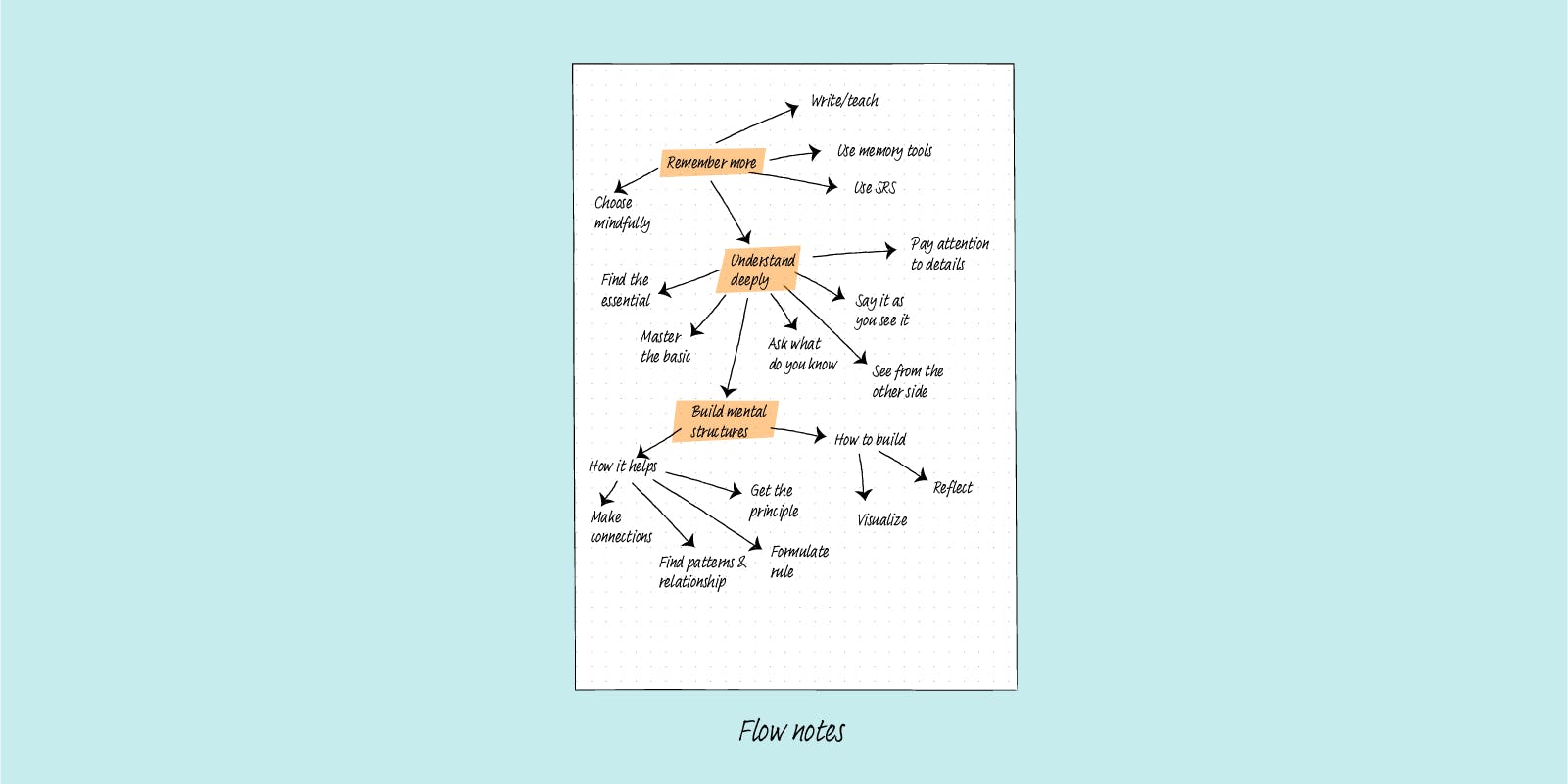
This method is very similar to the mind map method. I also often use this method when I have pieces of information that I feel should connect to some other ideas, but I have not figured out how they connect. For some kinds of situations, I use flow notes, and in other cases, I use a mind map.
Note on visual elements
Taking good notes can be challenging to do well when you are trying to capture all the critical information. One way to make note-taking a little easier is by adding visual elements to your notes. Adding visual features can help you better organize your thoughts and remember important details.
I try to add visual elements when I take notes. There are many wonderful references out there, but my favorites are The Sketchnote Handbook by Mike Rohde and The Back of a Napkin by Dan Roam. I should say, though, I do not actually ever make a full page of a sketch note. I only add some visual elements to emphasize a point or a key idea.
Summary
What method do you use to take notes? I have tried many different forms over the years and have found some that work better for me than others. Have you tried any of these methods and found them helpful?

